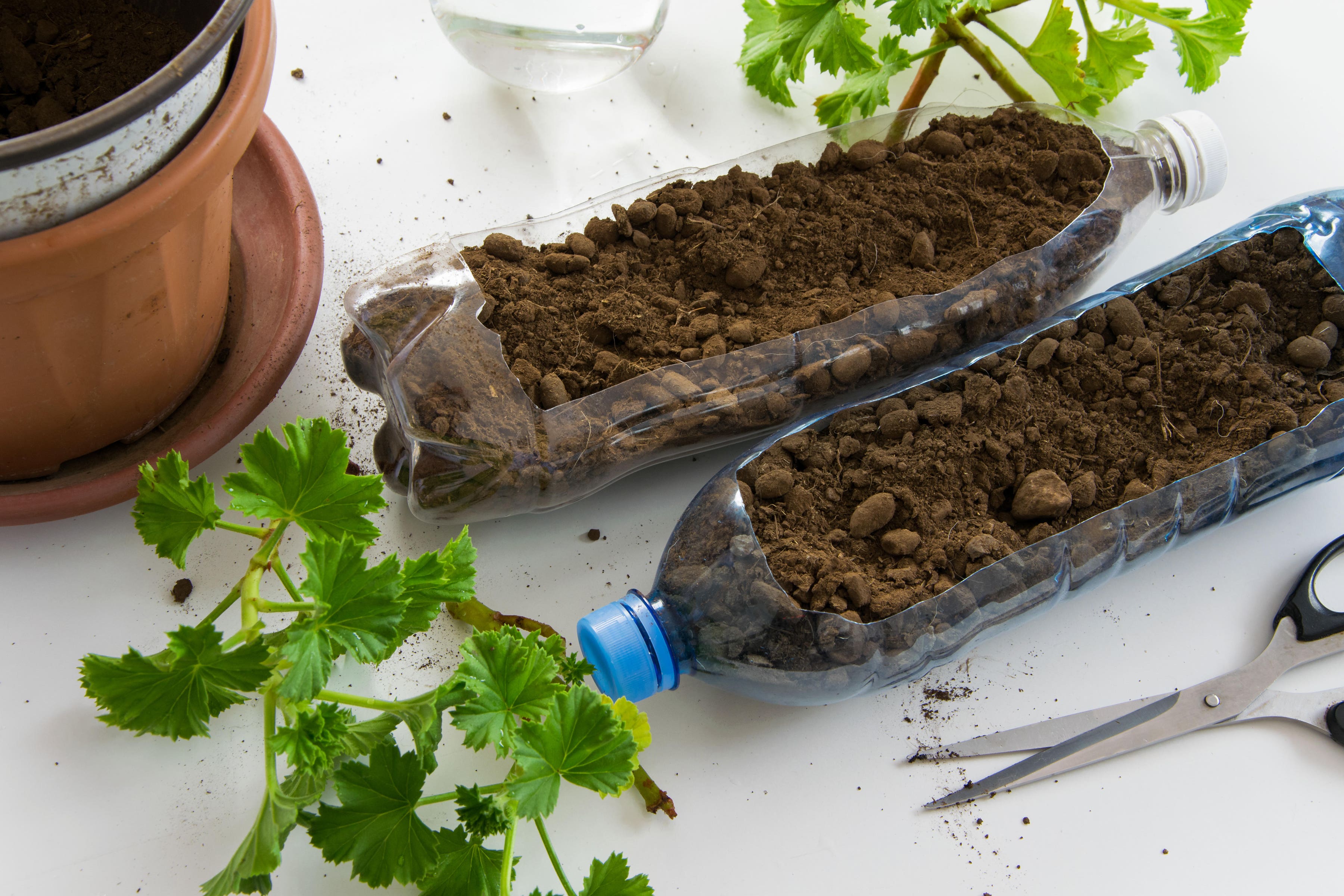Small steps to growing greener
Minor changes in your gardening habits can make a difference, says Hannah Stephenson.

We all want to try to grow greener, to help the planet and reduce waste, but sometimes the challenges can seem overwhelming.
Yet taking small steps can make going greener a less arduous task – and will make a big difference in the end.
Here are a few ideas on how gardeners can be more sustainable…
Go peat free
While the sale of peat for use on private gardens and allotments will be banned in England from 2024 (Scottish ministers have launched a consultation as they prepare to ban the sale of peat in Scotland; Wales is expected to enact a similar ban by May 2024, but in Northern Ireland proposals to phase out peat compost sales by 2025 were dropped from its Peatland Strategy 2022-2040), why wait that long?
It’s up to you to choose to buy peat-free composts – and there are plenty out there.
It’s also worth looking out for companies that are trying to make a difference. Tesco recently announced it has become the first UK retailer to go peat-free on its British-grown bedding plants, to lower its carbon footprint.
Peat remains the most popular aid used by the horticulture industry to grow potting plants, but when harvested, vast quantities of carbon are released into the atmosphere, accelerating climate change. Going peat-free will help preserve the UK and Ireland’s peatlands, which provide huge environmental benefits and are home to many rare plants, insects and birds.
Recycle
Plastic bottles, old tin cans and even unwanted furniture can all be put to use in the garden.
Reuse plastic flower pots or make new ones out of tin cans and the bottom of old plastic bottles, or create new seed trays from supermarket plastic fruit punnets.
Alternatively, take up plastic pot return schemes with your local garden centre – Dobbies have recently teamed with sustainable plant pot designer elho at 69 of its branches in a plastic pot return service and for other ideas on how to recycle other equipment (such as hand and garden tools and accessories), visit Recycle Now.
Reduce waste
If you want a garden project, create your own compost bin – where you can put everything from vegetable scraps and eggshells to cardboard, plant and grass clippings.
Even if you have a tiny plot, you may be able to fit a small compost bin that rotates to churn up the waste and occupies a smaller area, such as the Hozelock EasyMix 2-in-1 Garden Composter, or alternatively contact your local authority, as some will provide compost bins made from recycled plastic.
Save on air miles
Start your own veg patch or even a selection of patio pots to grow your own – green beans, sweetcorn and other fruit and veg often travel thousands of miles before landing on our plates.
Even if you can’t grow your own, look for seasonal local produce – like English asparagus in April and May, strawberries in June and apples in the autumn. And buy local produce, if you can.
Think about cut flowers
Fauna & Flora, an international wildlife conservation charity making its debut with a show garden at this year’s RHS Chelsea Flower Show, warns that over-harvesting of plants, habitat and peatland destruction, and gas-guzzling glasshouses can all cause immense environmental damage.
The charity advises: “Where you can, choose local flower growers and seasonal blooms, or – even better yet – propagate plants from cuttings of your friends’ and family’s floral collections. This will help minimise the carbon impact of your plants and flowers, while ensuring they have been sourced as responsibly as possible.”
If you decide to grow your own flowers for cutting, do so with pollinators in mind to help biodiversity – sweet peas, cosmos, cornflowers, salvias and foxgloves and single or semi double dahlias are magnets for pollinators. Cutting twigs and stems from shrubs can also help enhance your display.
Save water
Despite the heavy rain in March – England and Wales had their wettest March since 1981, with Northern Ireland seeing one of its wettest Marches on record, according to the Met Office – February was extremely dry and the National Drought Group is urging people to remain vigilant, especially in areas that have not recovered from the drought last year.
Gardeners can do their bit – installing water butts to gather rainwater under roof guttering and elsewhere, mulching the ground in spring to conserve moisture, planting drought-tolerant plants such as lavender and succulents such as Sedum spectabile, as well as those with silver or blue/grey foliage, which can often survive prolonged spells of dry weather.
If you have to water, do it early morning or at dusk, to avoid the heat of the day and reduce evaporation, or consider a smart irrigation system that determines the amount of water required by the dryness of the soil.
Bookmark popover
Removed from bookmarks